10 Drool-Inducing Smartphones From Mobile World Congress
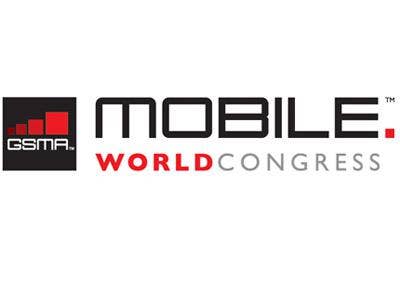
The Mobile World Congress (MWC) in Barcelona has become the premier platform to unveil the latest and greatest smartphones, and 2010 is no different. With Google Android and Microsoft Windows Phone 7 taking center stage, along with other mobile operating systems, the biggest smartphone movers and shakers unveiled their latest wares on the gadget-hungry public. While device makers aplenty pulled the curtain off of new smartphones and MWC 2010, we found 10 of most exciting from the likes of Acer, HTC, Huawei, Motorola, Samsung and Sony Ericsson and compiled them here.
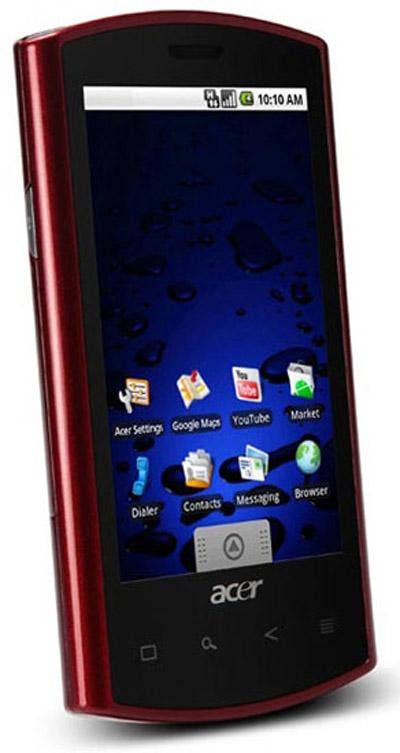
PC maker Acer stormed MWC 2010 with a handful of hot handhelds, including this updated Liquid, the Liquid e. Packing in Google Android 2.1, the Acer Liquid e ties in a 3.5-inch WVGA touch-screen, a 768MHz Snapdragon processor, a 5 megapixel camera, Wi-Fi, Bluetooth 2.0 and GPS.
Along with the Liquid e, Acer also released two more Google Android smartphones in the beTouch E110 and beTouch E400, a pair of touch-screens slated for later this year.
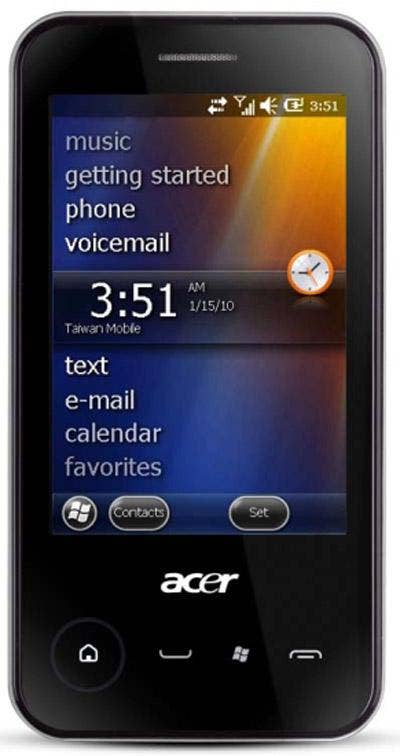
Acer also tapped into Windows Mobile with two new models in its neoTouch brigade. The Acer neoTouch P400, (left), runs on Windows Mobile 6.5.3. Expected in May, it offers a 3.2-inch screen, a 3.2 megapixel camera and Wi-Fi, all on top of a 600MHz Qualcomm processor.
The neoTouch P300, also showcased at MWC delivers most of the same functionality but adds in a slide-out QWERTY keyboard.
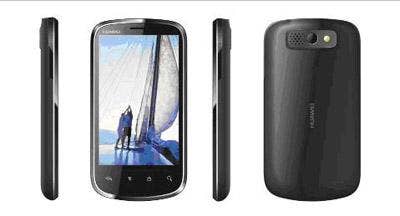
Huawei also got bit by the Google Android bug just in time for Mobile World Congress 2010, showcasing a host of new Android-based smartphones.
Billing it as the world's first HSPA+ smartphone to run Google Android, the Huawei U8800 is expected in the fourth quarter. It packs in Android 2.1 and integrates HSPA+ to support break-neck downlink speeds of up to 14 Mbps. The U8800 will feature a 3.8-inch widescreen.
Other Google Android handhelds Huawei unveiled during MWC include the social networking friendly U8300 and the entry-level touch-screen smartphones the U8100 and U8110.
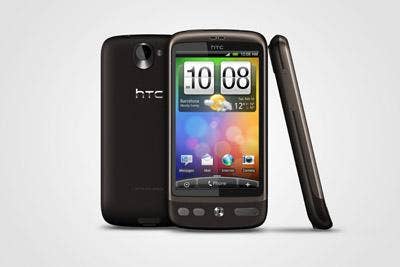
If there was a way to "win" MWC 2010, HTC is an early front runner, dropping several new handhelds to continue its tradition as a leader in Google Android innovation.
First up is the HTC Desire, which ties in a large 3.7-inch AMOLED WVGA display to enhance photos, videos and Web browsing. With a 1GHz Snapdragon processor and Adobe Flash 10.1, the Desire was built on visual experiences.
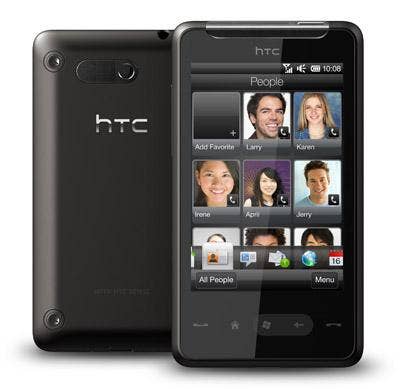
Introduced as the HTC HD2's kid brother, the HTC Mini is an HTC Sense-based Windows Mobile phone. The HTC HD Mini focuses on communication, tying in a host of e-mail and social media applications along with Outlook integration. The HTC HD Mini, expected in April in Europe and Asia, features 3G connectivity and Wi-Fi
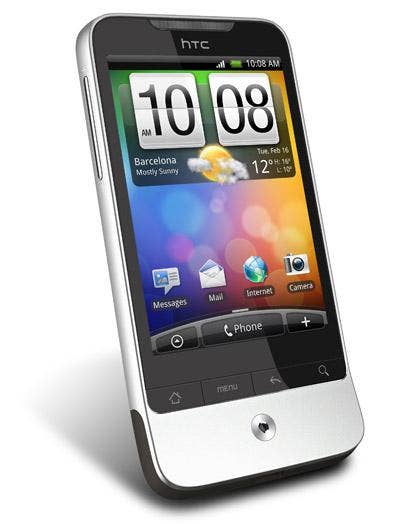
Built around HTC Sense, HTC's people-centric user experience, the HTC Legend features a unique new design and a 3.2-inch AMOLED HVGA screen. The traditional trackball has been swapped out with an optical joystick surrounded by a nary button for usability without taking away from the "smooth continuous surface, machined from a single aluminum block into a seamless compact frame." The Google Android-based Legend is expected in April.
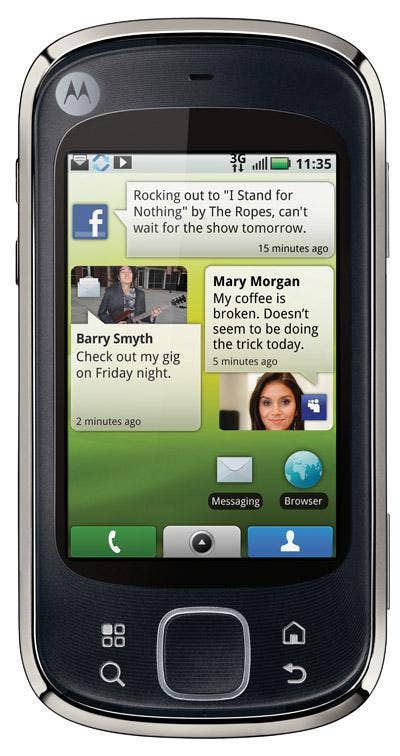
Motorola's latest handheld is having an identity crisis. It'll be dubbed as the Quench in Europe and the Cliq XT in the U.S. Despite having trouble finding a name, Google Android smartphone ties in Motorola's MOTOBLUR technology to sync and organize messages and contacts to keep conversations in motion.
The Quench/Cliq XT features a 3.1-inch display, Adobe Flash Lite, 3G, Wi-Fi, a 5-megapixel camera and a host of other features and functions that make it an Android-based multimedia, communication and social media powerhouse.
The Quench is expected in Europe sometime in the first quarter and the Cliq XT will hit the U.S. next month.
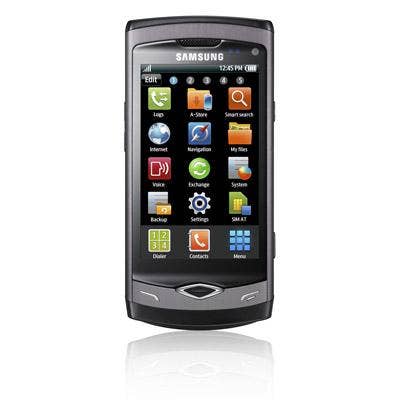
At MWC 2010 Samsung flipped the script, releasing the first mobile handset on its new open mobile platform dubbed Samsung bada. The Samsung Wave features a host of innovations, including a full-touch 3.3-inch Super AMOLED display; Social Hub to unify social networks; and TouchWiz 3.0, a new UI for customizing menus and home screens.
The Samsung Wave also adds Bluetooth 3.0 and 802.11n Wi-Fi; a 5-megapixel camera; HD video and myriad other functions. It will be available globally this year.
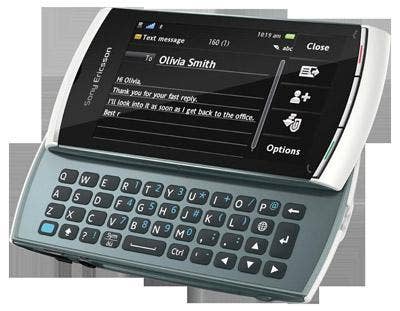
With the Vivaz Pro, Sony Ericsson launches a new touch-screen with a full QWERTY keyboard designed for messaging and social networking. Building on the Sony Ericsson Vivaz, the Vivaz Pro ads a 3.2-inch touch-screen, a 5.1-megapixel camera and Wi-Fi and Bluetooth connectivity. It also adds a host of social media and entertainment features and functions.
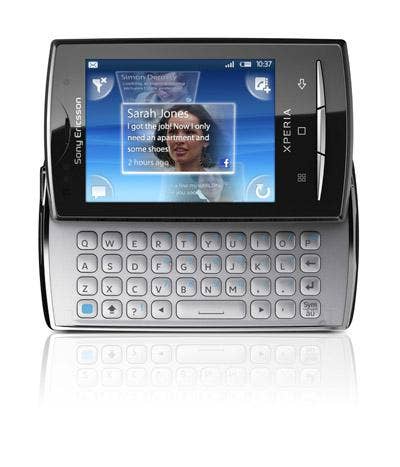
Sony Ericsson extended its Xperia X10 line, adding a the Xperia X10 Mini and X10 Mini Pro (shown) to the mix, chopping the size of the Xperia X10 and offering a host of communication and entertainment features. Sony Ericsson said the two new smartphones, unveiled at MWC 2010 are "smaller than a credit card."
The Xperia X10 Mini and X10 Mini Pro offer the same functionality, but the Pro adds a full QWERTY keyboard. The smartphones combine Google Android with a customizable UX platform. They also feature Sony Ericsson Timescape, a communications unifying application that gives a single-pane view to text messages, missed calls, Facebook and Twitter updates and other information. They also sport a 5-megapixel camera and 2.5-inch touch-screens.
Both the Sony Ericsson Xperia X10 Mini and Mini Pro will be available in the second quarter.